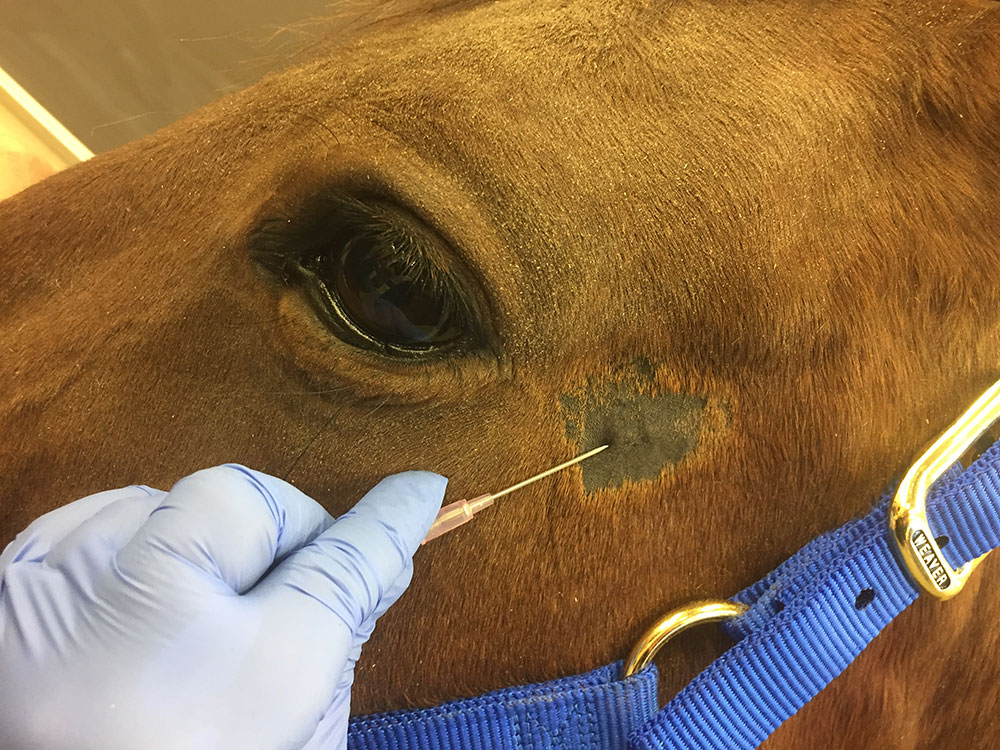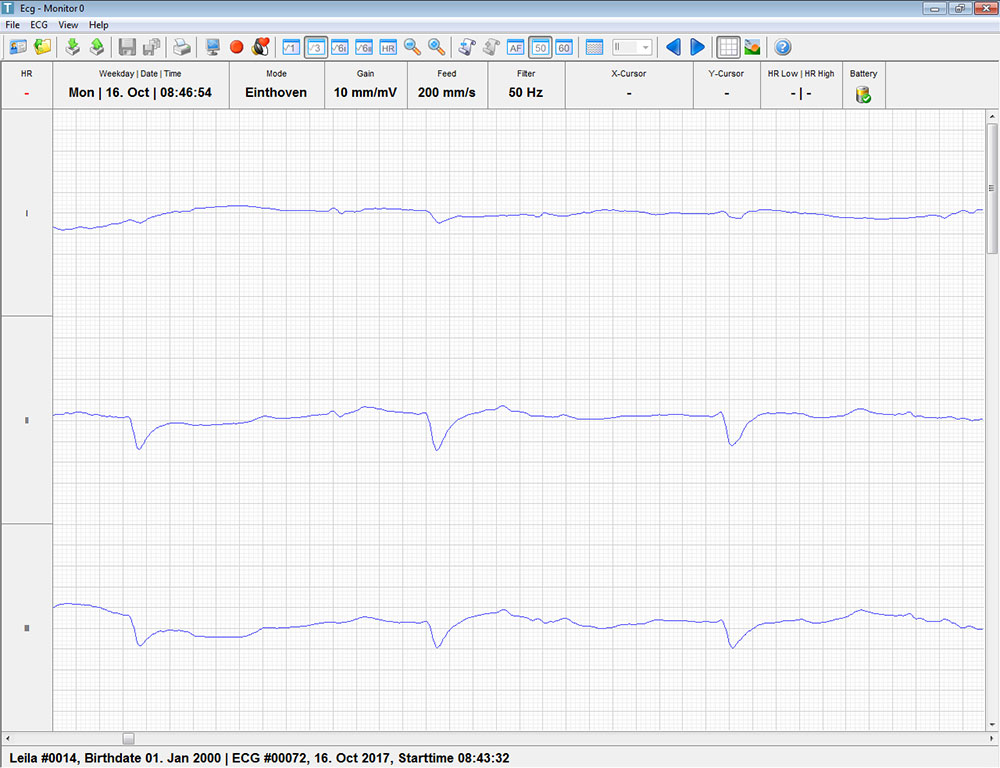
Treadmill
Before a treadmill test the horse must be fitted with the proper equipment. A safety harness is placed around the girth and attached to an emergency stop mechanism similar to a normal treadmill. Protective shin guards and boots are worn to prevent lower leg injuries. If the horse is a Standardbred pacer, hopples are placed on the legs to maintain a pacing gait as they would during competition. If an electrocardiogram is to be done then electrodes are placed under the harness to record the electrical activity of the heart.The treadmill test is used to detect symptoms of disease that may only occur during strenuous exercise such as lameness, cardiovascular and respiratory abnormalities. The treadmill can be increased up to 30 mph and set at different inclines (6% or 10%) to increase intensity at lower speeds. Information such as heart rate, blood values and even video of the upper airway can be obtained while the horse is running.

Collection of Arterial Blood
A catheter can be placed in the facial artery prior to the treadmill test. Blood samples are then collected during exercise to monitor important values such as oxygen saturation and lactate levels.

Electrocardiogram
An electrocardiogram (ECG) is used to record the electrical activity of the heart in order to detect abnormal heart rhythms. The electrical waves are measured by adhesive sensors placed on the skin underneath the safety harness. These sensors are connected to a transmitter on the harness that communicates with a nearby computer allowing immediate viewing.

Upper Airway Endoscopy
Endoscopy is a minimally invasive medical procedure using a video camera on a flexible tube to view the interior of a hollow area of the body, such as the stomach or airway. The upper airway of the horse begins at the nose and continues through the nasal passages to the larynx. Endoscopy during the treadmill test is used to visualize the larynx to diagnose mechanical abnormalities such as displacement of the soft palate, epiglottal entrapment and laryngeal hemiplegia.

 By using our website you agree to our
By using our website you agree to our